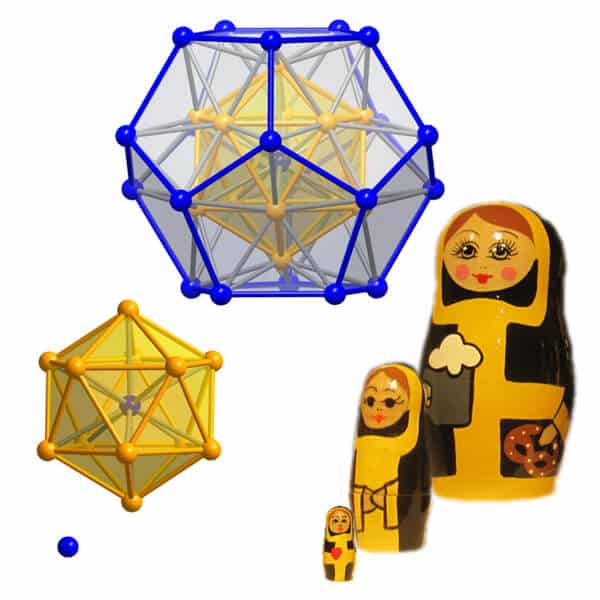A doll inside a doll, then another doll, wrapped from the outside in - this is how the researcher describes his new molecule, which consists of one atom located inside a cage inside an atomic frame. Given the large surface area of these materials, they may function as particularly effective catalysts

A doll inside a doll, then another doll, wrapped from the outside in - this is how the researcher describes his new molecule, which consists of one atom located inside a cage inside an atomic frame. Given the large surface area of these materials, they may function as particularly effective catalysts.
Especially fascinating are the pictures that researchers use to explain these chemical compounds and their properties. In the laboratory itself, the material does not look particularly impressive - a thin gray-black powder, but the models of the structure appear in various colors and shapes like a nest within a nest, a cage within a cage. These powders, in view of their large surface area, are interesting as a temporary phase for the development of efficient catalysts. Similar structures, based on the silicon atom, could be used in solar cells to absorb light from the sun more efficiently.
Most people imagine metals as uniform materials with a fairly regular structure. The metal compounds described in this study are the complete opposite of this - on the desk of the lead researcher there is a high pile of different and colorful models of cages with yellow spheres representing copper atoms and blue spheres representing tin. The similarity of these models to the compounds known as "bucky-balls" - fullerenes cannot be ignored. Here too, the geometric structures consist of triangles, pentagons and hexagons. However, they are not composed of carbon atoms: heavy metals, such as tin and lead, can also form such cage structures.
"Fundamentally, we are interested in unusual alloy structures," says lead researcher Faessler. Bronze for example: this mixture of copper and tin, which was discovered in ancient times and which lent its name to an entire era in human culture, has a crystalline structure; The atoms of the two components are uniformly distributed throughout the length and width of the entire crystal and are densely packed together.
The new bronze materials from Faessler's laboratory are different - the researchers melted a particularly pure form of copper coil together with tin grains under specially defined conditions - protected from air and moisture in a medium of the noble gas argon. In the next step, the resulting product is sealed in an ampoule made of tantalum metal together with an alkali metal such as potassium. The melting point of the metal tantalum is 3000 degrees Celsius and therefore it is particularly suitable as a receptacle where two or more different metals can react and join together.
This is the form in which the new metal sabers, locked inside each other like a Russian doll, were received. When the bronze is heated together with the alkali metal, such as potassium or sodium, to a temperature of 800-600 degrees Celsius, these metals function like scissors that cut the alloy network and then connect themselves between the pieces, thus stabilizing the atomic clusters.
Alone, these aggregates are not able to organize themselves into uniform and compact layers that form crystals. These clusters consist of pentagons with 20 tin atoms in each of them - an array in which repeating patterns are not possible under normal conditions. However, a little "cheating" and using potassium atoms as glue can create this perfectly normal-looking crystal. The previous year, the Israeli scientist Dan Shechtman won the Nobel Prize in Chemistry for the discovery of a similar phenomenon - the structures known as quasi-crystals with pentagonal symmetry.
"Our stocks are small units. They are, so to speak, piles of atoms that are not connected to their neighbors." This characteristic makes them ideal for catalysis applications: "Since they have a fixed size," explains the lead researcher, "they are much better at directing chemical reactions than normal catalysts." Hydration reactions, for example, in which hydrogen atoms attach to chains of organic molecules with oxygen atoms, for example, in the synthesis of artificial flavors. Normally, today precious metals such as rhodium are used for this application. However, new polar alloys containing magnesium, cobalt and tin atoms are used for the same purpose.
"In order to develop an effective reaction, we need a catalyst with a very large surface area." The classic method for achieving this goal is mixing two solutions of metal salts to obtain extremely tiny nanoparticles. "Our findings represent a full spectrum of sizes," explains the researcher. With the help of the use of metal clusters, we are able to precisely adapt the catalyst to our needs."

2 תגובות
A.N.
Not "babushka" but "matryoshka". No need to comment
Матрёшка!!!!!